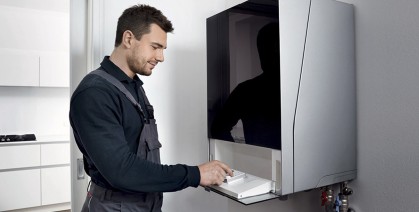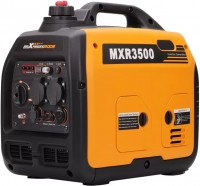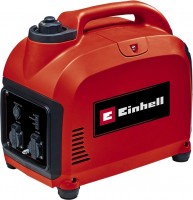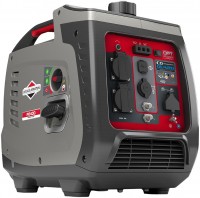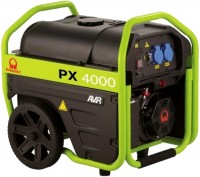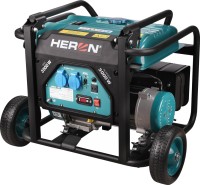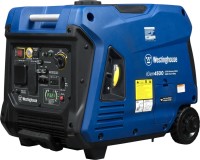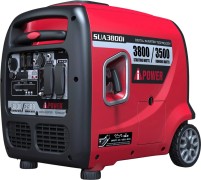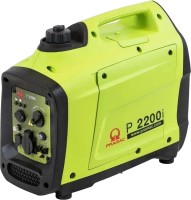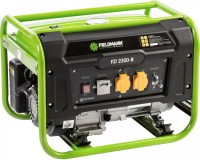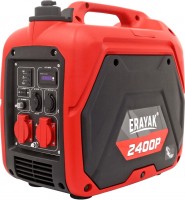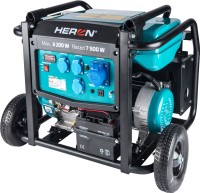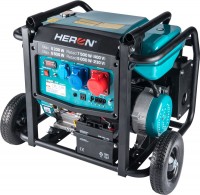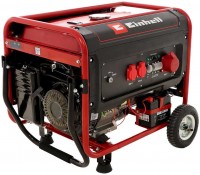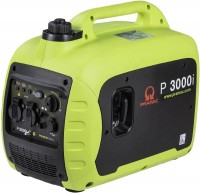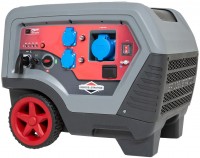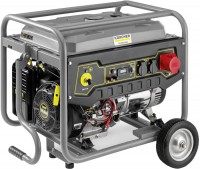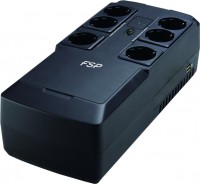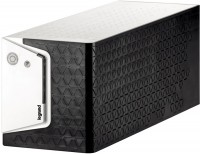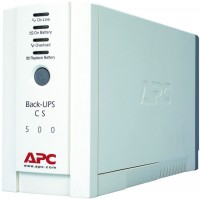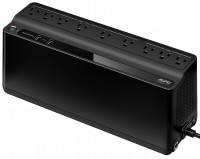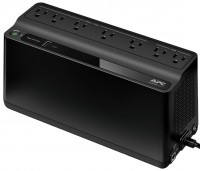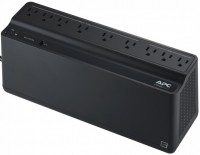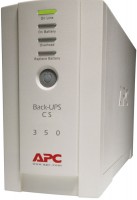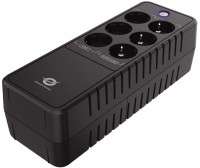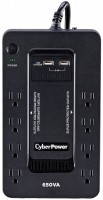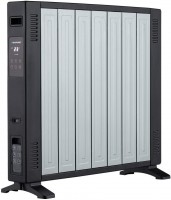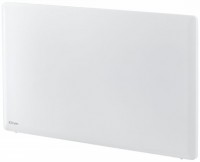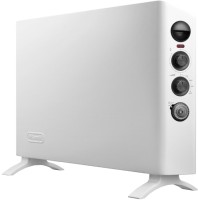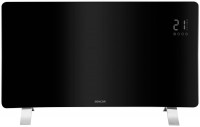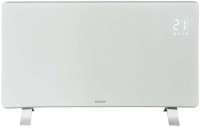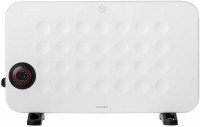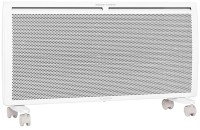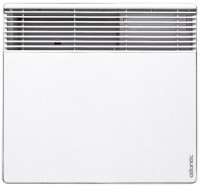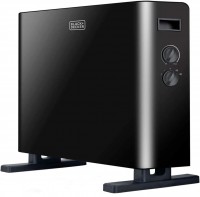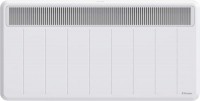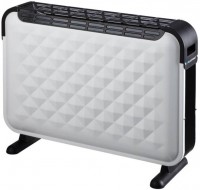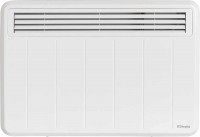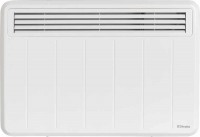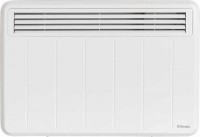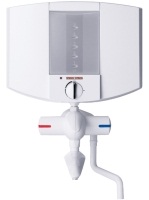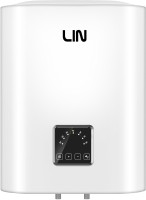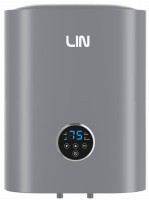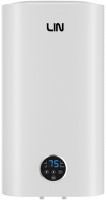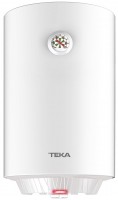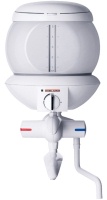How to get through the winter: autonomous house
We independently test the products and technologies that we recommend.
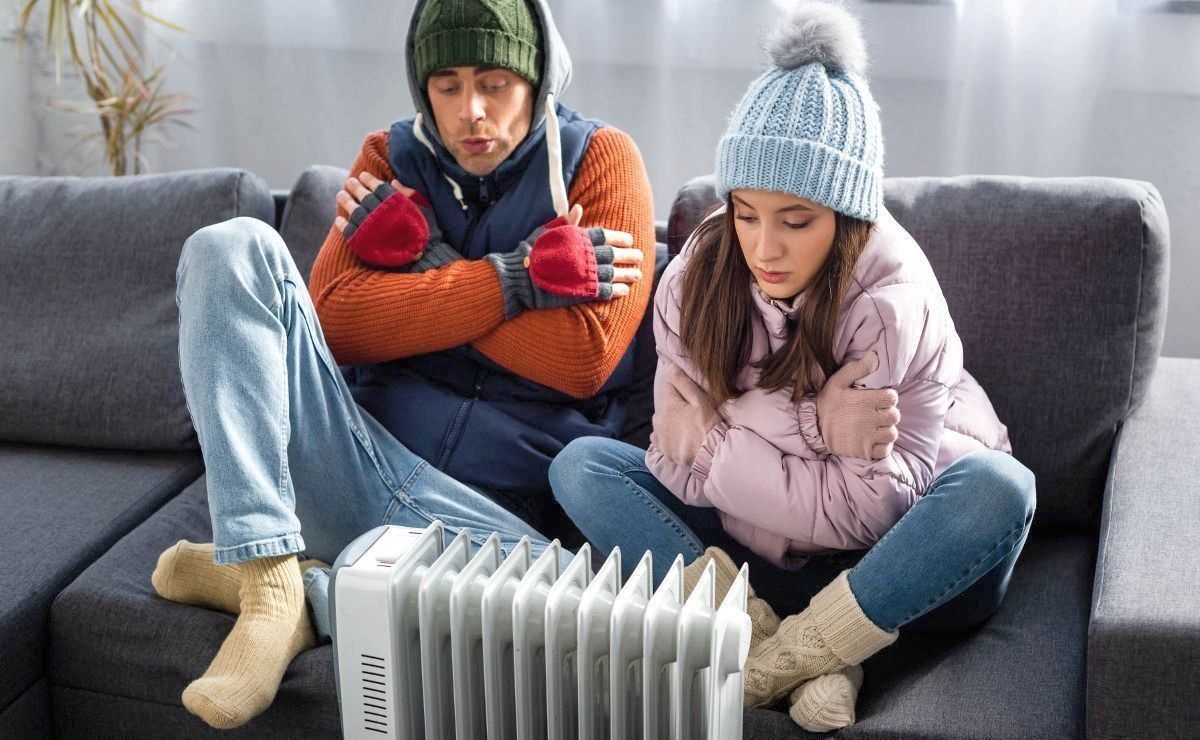
The key to the well-being of a comfortable life in the winter are three pillars: light, heat and hot water. If the supply chains of these benefits of civilization are disrupted, the apartment housing stock suffers in particular, where almost everything is tied to a centralized supply of electricity, heat or gas for autonomous heating sources. Owners of private suburban households also have a hard time during power outages, but at least they have the opportunity to build and deploy a solid fuel heating system.
What will come in handy with frequent shutdowns of everything and everyone in the winter? Let's go through the points.
Autonomous light sources
Light is the head of everything! In modern housing, the operation of the entire arsenal of household appliances, gadgets, climate control equipment and security systems is tied to electricity.
Charging stations
The design of portable charging stations is based on a high-capacity storage battery, supported by a variety of outputs for connecting devices that consume electric current. Mini-power plants are charged from an ordinary household outlet, a car cigarette lighter socket, and advanced models even from solar panels.
As a rule, the interface shelf for connecting charging stations has several 230 V sockets, USB ports (including those with the function of fast charging gadgets), a cigarette lighter for powering car electronics, and 12-volt outputs for powering low-voltage consumers.
 |
| From a portable charging station, you can power a whole arsenal of electronics and even household appliances. |
From traditional sockets on board charging stations, you can power any household appliances, such as a refrigerator, TV or even a heater(everything depends on the power of the power plant). In addition, most models provide for the possibility of a short-term increase in peak power to start the electric motors of some equipment (in particular, borehole pumps). In this case, the starting currents are several times higher than the rated power consumption.
The ability of the charging station to power any electrical appliance is reflected in the energy intensity indicator. So, a conventional model with a battery capacity of 2000 Wh can power a load of 2 kW for one hour. The period of autonomous power supply can be extended by using additional batteries. The charging station will add a couple of kilograms of extra weight, but will be able to provide light to critical consumers for an order of magnitude longer. Extra batteries are usually sold separately. There can be several such blocks in one chain - it is supposed to vary their number depending on the tasks set.
Read more about charging stations in the article "Autonomous power supply: what are portable charging stations?".
UPS
Another good backup option in the event of a blackout is a standby UPS with an auxiliary battery. It is the battery that provides the necessary electricity to the load in the absence of voltage in the network.
As long as there is light, the UPS accumulates charge in the battery, switching consumers to backup power in case of interruptions in the centralized power supply. You can also charge the UPS from the generator - in this case, the “uninterruptible” will come to the rescue when it’s really tight and the fuel supplies for the autonomous power plant are running out.
 |
| A well-chosen UPS can ensure the operation of lighting and low-power household appliances during power outages. And separate UPS models will come in handy for organizing autonomous operation of heating boilers. |
A pair of UPS batteries with a capacity of 51-70 Ah supports the operation of lighting in the house, sockets for charging gadgets, a TV, a router and security cameras for up to 2 days in a row. Agree, this is a very interesting option to meet the minimum needs for electrical energy. A good example of such a UPS is the Logicpower LPY-W-PSW-2000VA Plus model.
Backup generator
With frequent interruptions in the light, it is worth taking a closer look at the backup power generators. They help out for a certain time until the power supply is restored.
We described in detail the basic principles of "Selection of a backup power supply generator" in the framework of the material of the same name. In order not to repeat ourselves once again, we will focus on the key points in choosing an autonomous power plant.
An important characteristic of any generator is the rated power and its distribution to consumers. According to power classes, generators are conditionally divided into several groups:
- up to 3 kW - household generators for a summer residence or a small private house; their strength is enough for the work of lighting, a refrigerator and a small list of vital electrical appliances;
- 3 - 5 kW - the same household generators that provide more comfortable conditions for staying in the house during power outages; will be able to establish the work of one or two burners of an electric stove, a TV and a computer;
- 5 - 7 kW - powerful generators for a large house, where there is a boiler, air conditioning, electric heating, etc.; allow you to quietly survive blackouts and periodically turn on other electrical appliances in the manner of a vacuum cleaner; also units of such power are suitable for small offices and small shops;
- from 7 kW and more - this league includes professional-class power plants used in industry, in production and in the performance of repair and construction work.
In anticipation of the purchase of a generator, it is necessary to add up the estimated load power and throw another 20% on top in reserve so that the generator does not work at the peak of its ability to generate electricity. The best option for modestly comfortable waiting for moments of lack of light will be models with a power of around 5 kW.
 |
| In the courtyard of private households, a backup power generator is often placed on the street. However, an impromptu canopy for equipment still does not hurt. |
In the yards of private households, with the placement of a backup power generator, there are usually no problems. But what about those who live in apartments? Residents of the first floor of apartment buildings can put the generator on the street. Of course, the neighbors are unlikely to be happy with the noise from the unit, but during long blackouts, they will be the first to come running to you with a request to recharge a dead smartphone.
On the floors on top the first generator, you can allocate a piece of free space on the balcony. In this case, preference should be given to low-noise inverter models, which at the same time are suitable for powering highly sensitive electronic equipment. Mandatory attributes of such instances are the presence of a noise protection casing and vibration-absorbing pillows. "Inverters" consume a minimum of fuel and emit less exhaust gases. However, it will still not be possible to completely get rid of the exhaust - it will have to be finalized and brought out into the street through a special heat-resistant pipe. As a last resort, you can drown out the noise from a running generator by venting the exhaust into a container of water.
 |
| An unglazed balcony or loggia is best suited for placing a backup power generator in an apartment housing stock. |
To maintain the generator in constant combat readiness, you need to stock up on suitable fuel in canisters: gasoline or diesel (household units are usually equipped with gasoline engines). You also need to buy a watering can.
Autonomous light sources
Is it possible to do without a bulky generator so that there is light at home? There are several options here.
In a private house, autonomous sources of electricity can be solar panelsused in order to obtain maximum efficiency from renewable energy sources. It should be noted that in the autumn-winter period, the generation of electricity from solar panels decreases due to the formation of clouds, heavy precipitation and a general reduction in daylight hours. They are most effective in spring and summer.
Sunlight energy is stored in batteries. With proper selection of components, taking into account the appetites of household appliances, centralized power supply can be completely abandoned. But it will pour out from the start into a pretty penny.
 |
| Solar panels on the balcony can be successfully disguised. |
In an ordinary apartment, a large panel will definitely not come out. But a small solar panel is easy. Energy reserves from it will be enough for the operation of light bulbs and other low-power consumers. Also from a good solar panel, you can organize backup power for the refrigerator. For heating, such systems are no longer strong enough.
A good backup option in the event of a blackout is a standby UPS with an auxiliary battery. It is the battery that provides the necessary electricity to the load in the event of a power failure in the network.
As long as there is light, the UPS accumulates charge in the battery, switching consumers to backup power in case of interruptions in the centralized power supply. You can also charge the UPS from the aforementioned generator - in this case, the “uninterruptible” will come to the rescue when it’s really tight and the fuel supplies for the autonomous power plant are running out.
 |
| A well-chosen UPS can ensure the operation of lighting and low-power household appliances during power outages. And separate UPS models will come in handy for organizing autonomous operation of heating boilers. |
A pair of batteries for a UPS with a capacity of 51-70 Ah supports the operation of lighting in the house, sockets for charging gadgets, a TV, a router and security cameras for up to 2 days in a row. Agree, this is a very interesting option to meet the minimum needs for electrical energy. A good example of such a UPS is the Logicpower LPY-W-PSW-2000VA Plus model.
At the same time , portable charging stations are gaining popularity as an alternative to smoky generators. They are charged from a regular household outlet, a car cigarette lighter socket, and advanced models even from solar panels. Together with an additional battery, such stations are well suited for backup power to the refrigerator and can be a key link in autonomous power supply systems. Models are graded according to battery capacity and rated load. For example, the conditional EcoFlow DELTA station (1260 Wh) allows you to connect electrical appliances with a power of up to 1800 W, and its charge is enough for 12.5 hours of battery life of the refrigerator, almost 7 hours of TV operation and about 16 full laptop charging cycles (in practice, all depends on the characteristics of the laptop battery).
Heating
Heating boilers will serve as autonomous sources of heating for suburban dwellings. The best choice in the complete absence of light and gas supply is a solid fuel boiler, which can be fired with wood and pellets. The circulation pumps and the electronics control unit in the design of such a boiler can be powered by batteries charged in the presence of electricity or from a generator.
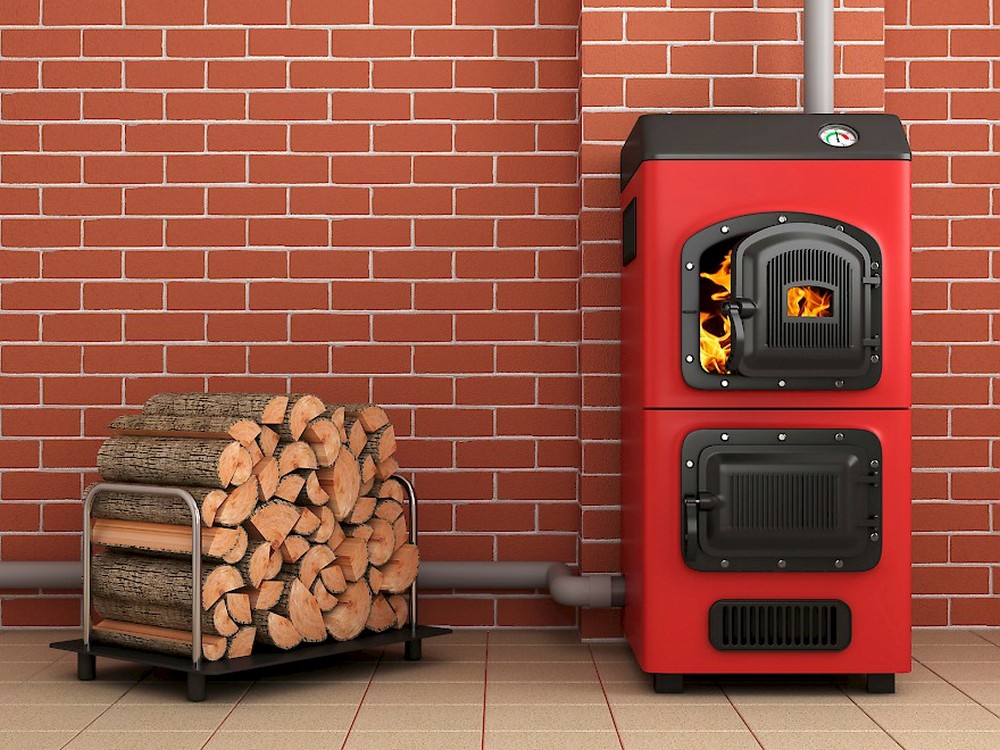 |
| A solid fuel boiler is the best choice for providing heat to country-style housing. |
There is no place for a solid fuel boiler in apartments. Here you have to rely on gas or electric boilers. If desired, the gas boiler is officially converted to work on liquefied "blue fuel", which simplifies the operation of the equipment in the absence of gas in the central line. Fortunately, cylinders are now easy to buy, and you can fill them even at gas stations where automobile gas is dispensed. The boiler electronics unit is also powered by a UPS or a generator. In the latter case, for correct joint operation, the generator will need grounding.
A quick option to keep warm in winter (subject to the presence of light) is a classic fan heater. "Duychik" is the simplest, cheapest and most convenient way to heat a small room. A desktop or floor-standing device takes up little space, quickly heats up a room, and can also operate as a conventional fan without heating, which makes it useful not only in the cold season, but also in summer.
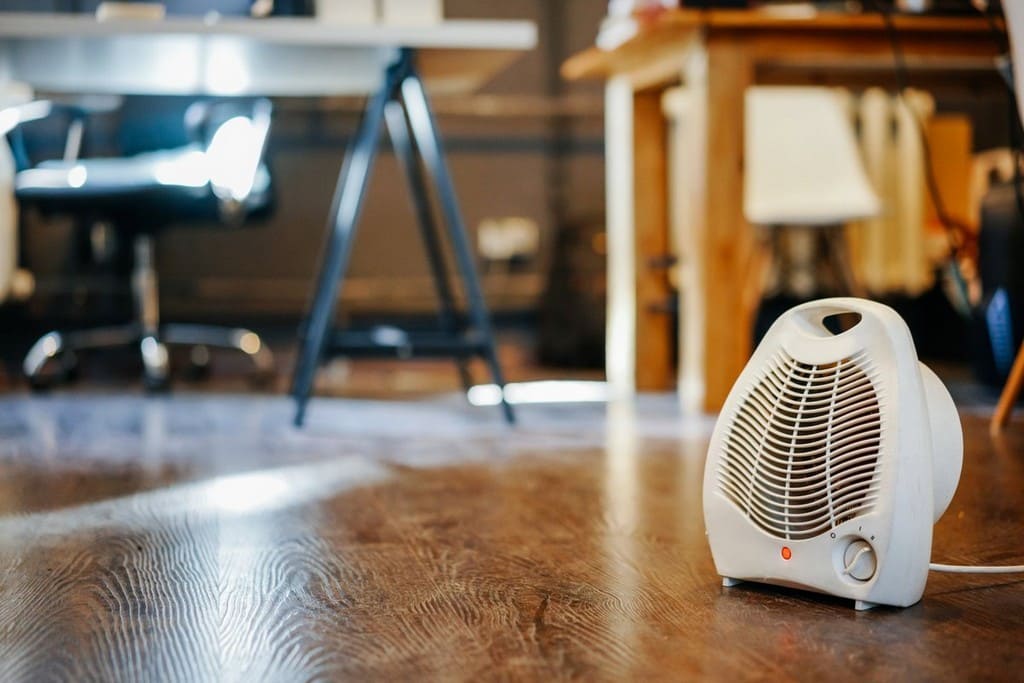 |
| The fastest way to keep warm in winter is to use a fan heater. |
A suitable alternative to fan heaters is oil coolers and electric convectors. Both types of heaters are characterized by silent operation and maintain the desired temperature by means of a built-in thermostat. They come to the rescue with insufficient efficiency of central heating and during the off-season. In the absence of electricity, the heaters can be powered by a backup generator (in full or half power mode).
Also, do not forget about air conditioners for heating in winter. We wrote more about them in the article "TOP-5 inexpensive inverter air conditioners with the ability to work for heating in severe frosts".
A comfortable bed will help organize electric sheets and electric blankets. The first order devices fit under a regular sheet and warm the user from below, the second order are traditional blankets for shelter with a heating function.
Hot water
An important benefit of modern civilization is hot water supply. In order not to depend on centralized hot water supply systems, you can install a boiler at home. Preference should be given to storage water heaters. It is necessary to take into account the number of people who use the services of the boiler, and the number of water points. For a family of two, a water heater with a tank volume of about 50 liters will be quite enough, out of three four - 80-100 liters.
When using a centralized hot water supply system or a gas boiler for preparing hot water , an electric boiler will serve as a backup. In this case, you don’t need to chase after a large volume of the tank - a 30-50 l water heater is enough to provide hot water. The reserve boiler should have a capacity of around 1.5 kW (the backup power system can no longer pull), the function of not mixing the layers of cold and hot water is also important.
 |
| As an addition to centralized hot water systems or heating boilers, it is worth taking a closer look at storage water heaters. |
Storage water heaters with a "dry" heating element are rightfully considered the most reliable in the class - the heating elements in the design of their tank do not have direct contact with water, which prevents the deposition of scale and plaque. Heating elements in such boilers last longer and are less likely to fail.
Not only electrical appliances from the list on top will help to survive the winter. In anticipation of the onset of the cold season, it is advisable to stock up on warm clothes and blankets, install energy-saving double-glazed windows on windows and, in general, insulate the habitat. And most importantly - you need to keep your spirits up and move actively!
Articles, reviews, useful tips
All materials
